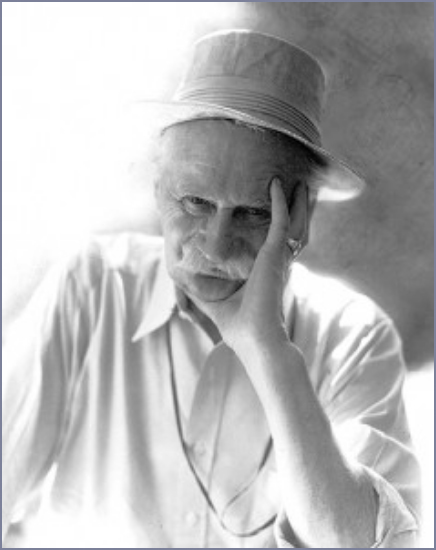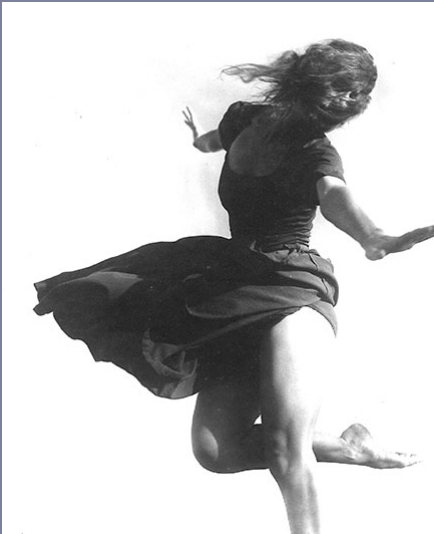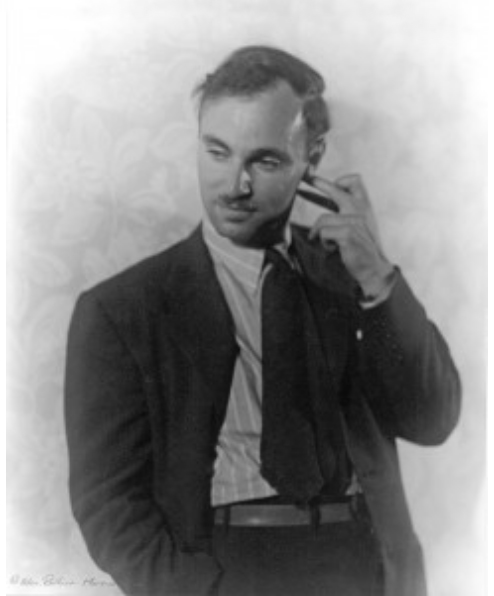
Jens Jensen c. 1935
The motivation to become an artist is sometimes mysterious. For Helen Balfour Morrison it was hearing JENS JENSEN and longing to make a portrait worthy of him that set her on her path.
“Jens Jensen was the beginning of my career as an artist in photography. I heard him speak, and when he said, ‘This morning as I stood in my woods and looked out over the great Green Bay I felt I could lay down my hat and meet my Maker,’ suddenly I knew there was a Maker, after years of denying it. After the speech was over and all the people had left, I was still sitting, and a friend said quietly, ‘Don’t you think we should go?’ I got up and went home, made my own printing machine, and decided I would take pictures until I felt good enough to photograph Jensen. A year later I made my first portrait of him.”
— Helen Morrison in Sybil Shearer, A Portrait of the Photographer
“It was light – light in relation to the subject, the nuance of shading to bring out character that was most important. In Jensen the light seemed to shine around and through him.”
—Sybil Shearer

Sybil Shearer, The Inheritance Photo Series, 1943
“Photography is the art of speed. In one split second the image has been recorded. But when to click the shutter, and what will be on the plate from the standpoint of composition, light, texture, and most important — the moment at which the character of the subject is revealed — this takes technique and an unusual talent behind the shutter. That talent was Helen Balfour Morrison. ”
—Sybil Shearer, A Portrait of the Photographer
“TO THOSE WHO ARE CONCERNED: All of my life I have believed in doing things backwards. That is, the way I did things seemed to be backwards to the so-called sane man in the street. Actually, it was not backwards as I found out by the gradual unfolding of life – mine and others – and the development of my understanding of art, which is really life in a heightened form, or shall we say the inside workings which I found, for their protection, projected an outside which was the exact opposite. Hence instead of photographing the outside of a person, I photograph the inside.
In photographing a dancer, for instance, I found that I seldom included the legs, which would certainly seem to be an oversight. But as it turns out, the arms are rather a symbol of the inside and the legs a symbol of the outside. Of course it is not as simple as it sounds because sometimes it is both. But if you put out your creative antennae you will know which is the inside and which is the outside, and in the same way which is backward and which is forward.”
— Helen Balfour Morrison

David Daiche, Scottish Literary Historian
“Anyone who has seen Helen Morrison at work will appreciate the amount of effort and energy she devotes to the task of getting her subjects to symbolize themselves in a manner which the camera can capture. She does this without arousing any suspicion in the person being photographed that a deliberate ‘drawing out’ is taking place.
She will argue with a writer or a painter about his work, challenge the judgment of a critic, get a poet excited about the interpretation of some particular poem—in every case searching for the key to the individual’s real personality, trying to achieve a revelation of the essential kind of action or repose (for it might be either) which immediately floodlights the real man. The key might be some slight gesture, a fleeting expression across the face, a turn of the head or a movement of the hands, but no photograph will be taken until it has been found, even if it means that a whole day has to be wasted.
She has indeed often spent a whole day working on one person – not working in any obvious or technical way, but seeking through conversation and other means to induce her subject to drop for one moment at least that conventional mask which we all wear when facing the world. The person being photographed does not himself know when that moment has been reached, for we only drop our masks when our spontaneous interest in whatever is going on has been so aroused that we become our essential selves without any self-consciousness at all.”
—David Daiche, excerpted from The Art of Helen Balfour Morrison in the exhibition handout for the Toledo Museum of Art, 1947
